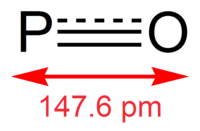
Photo from wikipedia
Systematically studying the lipophilicity of phosphorus compounds is of great importance for many chemical and biological fields and particularly for medicinal chemistry. Here, we report on the study of trends… Click to show full abstract
Systematically studying the lipophilicity of phosphorus compounds is of great importance for many chemical and biological fields and particularly for medicinal chemistry. Here, we report on the study of trends in the lipophilicity of a wide set of phosphorus compounds relevant to drug design including phosphates, thiophosphates, phosphonates, thiophosphonates, bis-phosphonates, and phosphine chalcogenides. This was enabled by the development of a straightforward log P determination method for phosphorus compounds based on 31P-NMR spectroscopy. The log P values measured ranged between -3.2 and 3.6, and the trends observed were interpreted using a DFT study of the dipole moments and by H-bond basicity (pKHB) measurements of selected compounds. Clear signal separation in 31P-NMR spectroscopy grants the method high tolerability to impurities. Moreover, the wide range of chemical shifts for the phosphorus nucleus (250 to -250 ppm) enables a direct simultaneous log P determination of phosphorus compound mixtures in a single shake-flask experiment and 31P-NMR analysis.
Journal Title: Journal of medicinal chemistry
Year Published: 2022
Link to full text (if available)
Share on Social Media: Sign Up to like & get
recommendations!